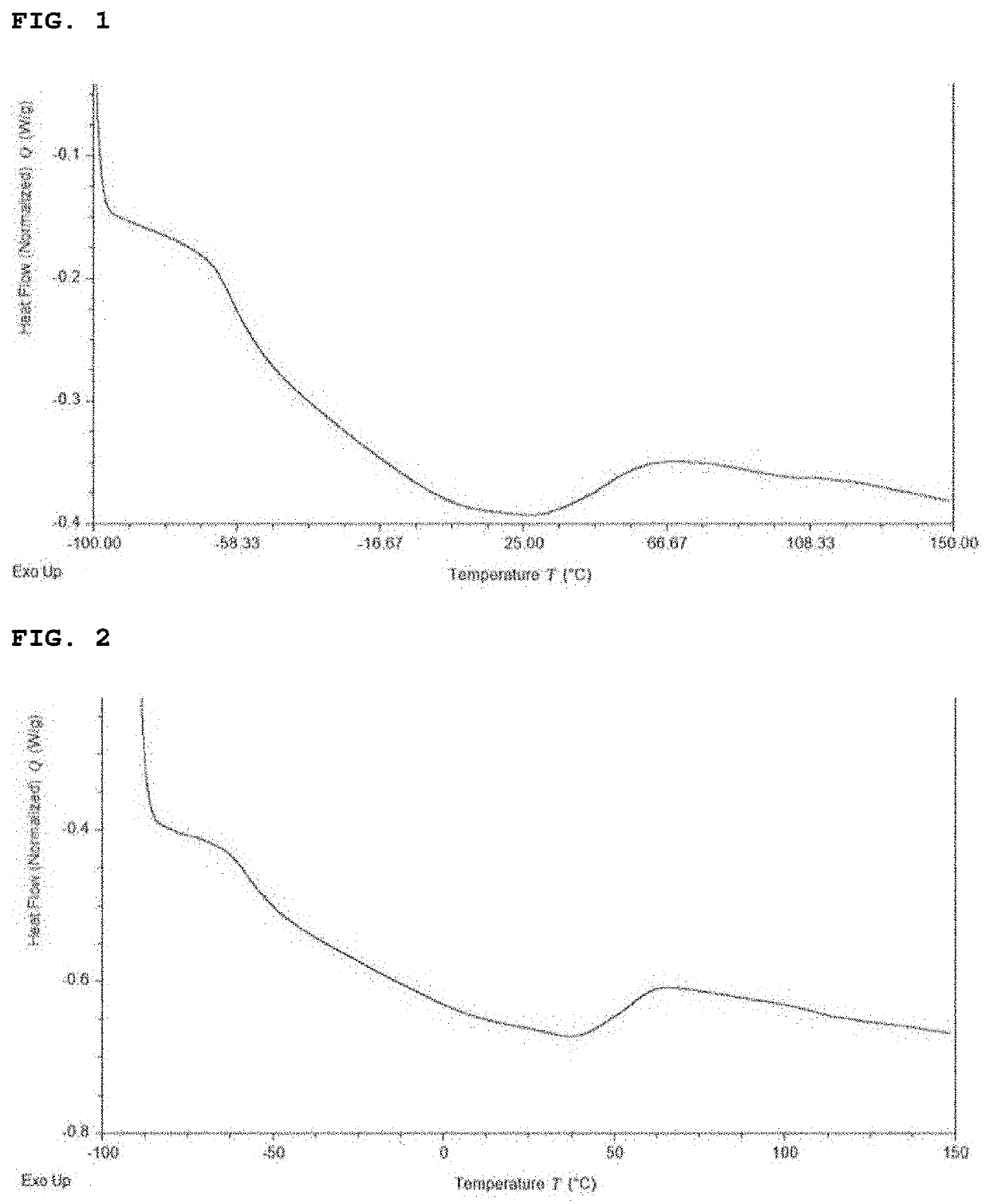Polypropylene-Based Composite
a polypropylene and composite technology, applied in the field of polypropylene-based composites, can solve the problems of limitations in securing impact resistance according to diverse utilizing environments, and achieve the effects of improving impact strength properties, excellent mechanical strength, and high mechanical rigidity
- Summary
- Abstract
- Description
- Claims
- Application Information
AI Technical Summary
Benefits of technology
Problems solved by technology
Method used
Image
Examples
preparation example 2
Catalyst Preparation of Transition Metal Compound B
[0121]
(1) Preparation of 2-methyl-7-(2,3,4,5-tetramethyl-1,3-cyclopentadienyl)indoline
[0122]2-methyl-7-(2,3,4,5-tetramethyl-1,3-cyclopentadienyl)indoline was prepared through the same method as in (1) in Preparation Example 1 except for using 2-methylindoline instead of 1,2,3,4-tetrahydroquinoline in (1) of Preparation Example 1. The yield was 19%.
[0123]1H NMR (C6D6): δ 6.97(d, J=7.2 Hz, 1H, CH), δ 6.78(d, J=8 Hz, 1H, CH), δ 6.67 (t, J=7.4 Hz, 1H, CH), δ 3.94 (m, 1H, quinoline-CH), δ 3.51 (br s, 1H, NH), δ 3.24-3.08 (m, 2H, quinoline-CH2, Cp-CH), δ 2.65 (m, 1H, quinoline-CH2), δ 1.89 (s, 3H, Cp-CH3), δ 1.84 (s, 3H, Cp-CH3), δ 1.82 (s, 3H, Cp-CH3), δ 1.13 (d, J=6 Hz, 3H, quinoline-CH3), δ 0.93 (3H, Cp-CH3) ppm.
(2) Preparation of [(2-Methylindolin-7-yl)tetramethylcyclopentadienyl-eta5,kapa-N]titanium dimethyl
[0124](i) A dilithium salt compound (compound 4 g) coordinated with 0.58 equivalent of diethyl ether was obtained (1.37 g, 50%)...
preparation example 1
[0129]To a 1.5 L continuous process reactor, a hexane solvent (5 kg / h) and 1-butene (0.95 kg / h) were charged, and the temperature of the top of the reactor was pre-heated to 140.7° C. A triisobutylaluminum compound (0.06 mmol / min), the transition metal compound B (0.40 μmol / min) obtained in Preparation Example 2, and a dimethylanilinium tetrakis(pentafluorophenyl) borate co-catalyst (1.20 μmol / min) were injected at the same time into the reactor. Then, a hydrogen gas (15 cc / min) and ethylene (0.87 kg / h) were injected into the reactor, and copolymerization reaction was performed by maintaining 141° C. for 30 minutes or more in a continuous process with a pressure of 89 bar to obtain a copolymer. After drying in a vacuum oven for 12 hours or more, physical properties were measured.
preparation examples 2 to 5
[0130]Copolymers were obtained by performing the same copolymerization reaction as in Preparation Example 1 except for changing the amount used of a transition metal compound, the amounts used of a catalyst and a co-catalyst, the reaction temperature, the injection amount of hydrogen and the amount of a comonomer as in Table 1 below.
PUM
| Property | Measurement | Unit |
|---|---|---|
| melting temperature | aaaaa | aaaaa |
| total enthalpy of fusion ΔH | aaaaa | aaaaa |
| temperature | aaaaa | aaaaa |
Abstract
Description
Claims
Application Information
 Login to View More
Login to View More - R&D
- Intellectual Property
- Life Sciences
- Materials
- Tech Scout
- Unparalleled Data Quality
- Higher Quality Content
- 60% Fewer Hallucinations
Browse by: Latest US Patents, China's latest patents, Technical Efficacy Thesaurus, Application Domain, Technology Topic, Popular Technical Reports.
© 2025 PatSnap. All rights reserved.Legal|Privacy policy|Modern Slavery Act Transparency Statement|Sitemap|About US| Contact US: help@patsnap.com



